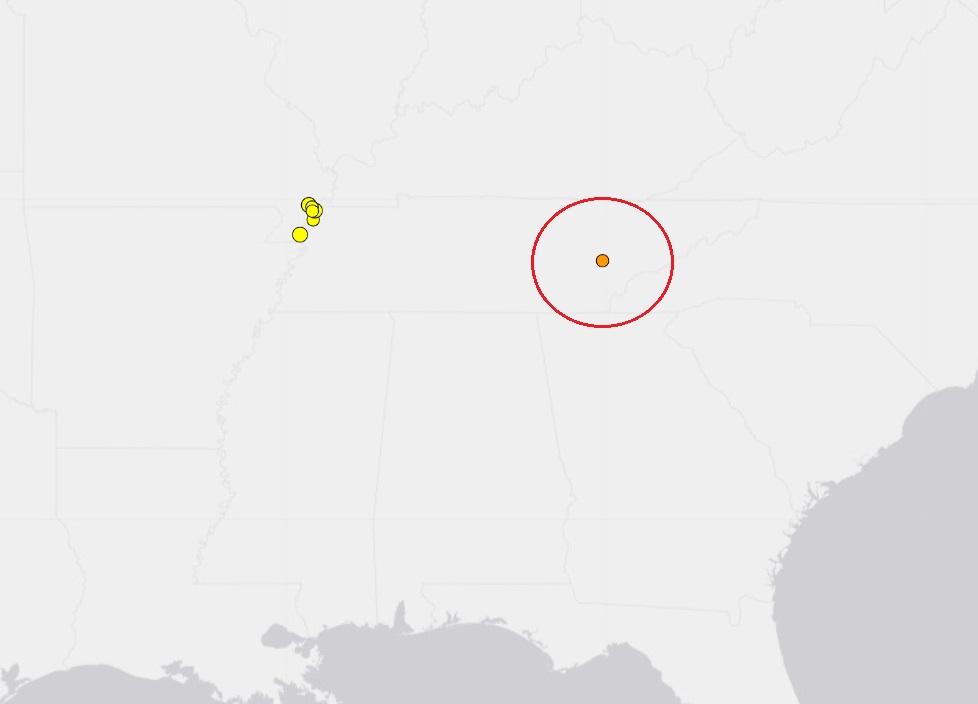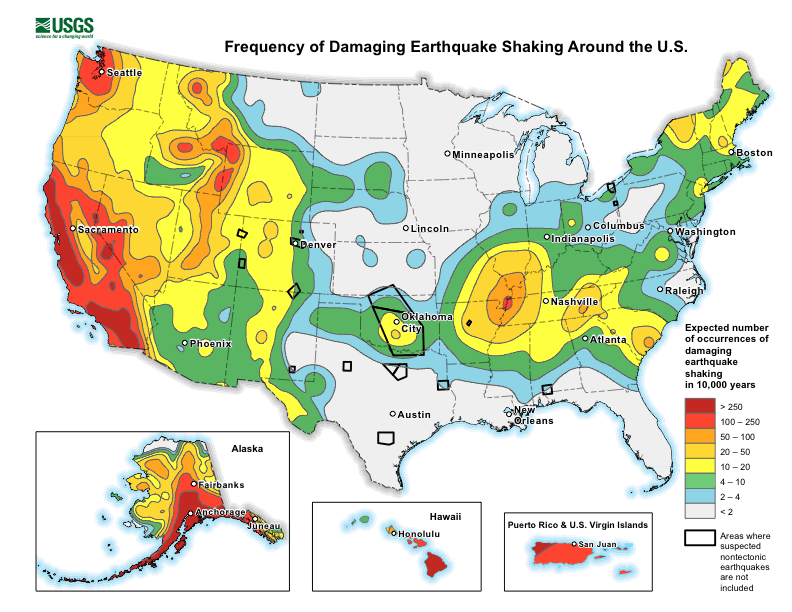
According to USGS, a weak earthquake rattled eastern Tennessee near the town of Philadelphia earlier this morning. The benign 1.5 magnitude event struck just under 4 miles from Philadelphia at 6:03 am from a depth of 8.8 km. No one used the USGS “Did you feel it?” tool on their website to report shaking; most quakes below a magnitude 2.0 event cannot be felt.
While the quake was weak, it adds to the number of earthquakes that have struck Tennessee within recent weeks. There have been 6 in the last 7 days, 30 in the last 30 days, and 262 in the past 365.
Most of the earthquakes over the last 7 days have been located in the western part of the state, where there has been considerable seismic activity in recent weeks. Western Tennessee is located within the New Madrid Seismic Zone, an area famous for a catastrophic series of earthquakes in 1811-1812 that were centered near New Madrid County, Missouri. The New Madrid Seismic Zone is also known as NMSZ for short.

According to the Missouri Department of Public Safety, the New Madrid Seismic Zone is active and averages about 200 measured events per year (magnitude 1.0 or greater). Tremors large enough to be felt (magnitude 2.5 – 3.0) occur annually. On average every 18 months, the fault releases a shock of magnitude 4.0 or greater, which is capable of local minor damage. A magnitude 5.0 or greater occurs about once per decade, can cause significant damage and be felt in several states.
According to USGS, earthquake volume in the NMSZ is running about 300% above normal this summer. While the volume has been high, the intensity has been low with no earthquake creating any damage or injuries.
Earthquakes like the one that occurred earlier today in the eastern part of Tennessee are unlikely associated with the New Madrid Seismic Zone. However, while USGS says western Tennessee has a higher frequency of damaging earthquake shaking, the risk isn’t that low in eastern Tennessee. In the area of today’s earthquake, USGS says its likely this area would see 50-100 damaging earthquakes over 10,000 years. While this number is low, it is much higher than it is elsewhere in the eastern half of the United States, where it’s likely to have 10 or less earthquakes over the same period.